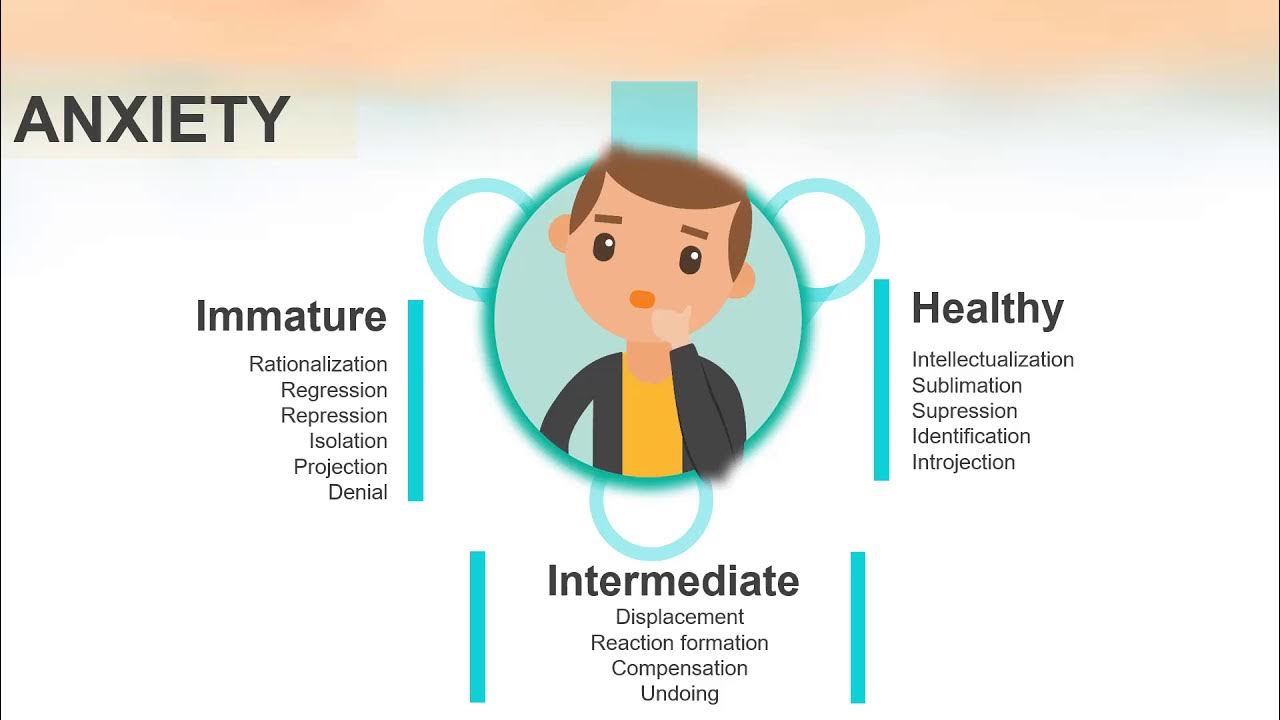ESTRUTURAS CLÍNICAS NA PSICANÁLISE | Alexandre Simões
Summary
TLDRThis video explores Lacanian psychoanalytic concepts, focusing on clinical structures like neurosis, psychosis, and perversion. It delves into the significance of language and its structural role in forming these clinical categories, drawing connections to Freud's mechanisms of defense, such as repression, foreclosure, and denial. The video emphasizes that these structures are not rigid typologies but dynamic ways of subjectivizing, influenced by how the subject relates to desire, sexuality, and other core aspects of the self. Ultimately, it calls for careful, individualized clinical listening to understand the unique manifestations of these structures in practice.
Takeaways
- 😀 Lacan's theory of clinical structures is deeply connected to language, which is seen as a structured system made up of elements that interact through rules and principles.
- 😀 The relationship between elements of language is governed by two key processes: metaphor (substitution) and metonymy (displacement). These concepts are tied to Freud’s ideas of condensation and displacement in dream interpretation.
- 😀 Lacan emphasizes that structures in psychoanalysis are not rigid typologies but dynamic, versatile frameworks that reflect different ways individuals relate to their own desires and suffering.
- 😀 The three primary clinical structures in Lacan's theory are neurosis, psychosis, and perversion. Each corresponds to specific defense mechanisms outlined by Freud: repression (neurosis), foreclosure (psychosis), and denial (perversion).
- 😀 Neurosis, psychosis, and perversion represent different ways subjects respond to the concept of castration, a symbol of the incompleteness or lack inherent in human existence.
- 😀 Lacan proposes that clinical structures are not fixed diagnostic categories but rather ways in which individuals subjectivize themselves, each relating differently to the world, others, and their own bodies.
- 😀 In neurotic structures, various forms like hysteria, obsessive neurosis, and phobia can be found, each with its own unique characteristics and internal dynamics.
- 😀 Psychosis is linked to conditions such as paranoia and schizophrenia, and is primarily seen through disturbances in mood, such as extreme highs and lows, often manifesting in phenomena like melancholia.
- 😀 Perversion is characterized by mechanisms like fetishism, which is a way of dealing with the castration complex by trying to avoid or deflect the sense of lack.
- 😀 Lacan’s later work on the structure within the subject (as opposed to merely a structure of the subject) invites deeper exploration of how individuals relate to desire, sexuality, and their 'others' (objects of desire or suffering) in a more flexible and nuanced way.
Q & A
What is the primary theme discussed in the video?
-The video discusses the concept of 'clinical structures' in psychoanalysis, specifically focusing on Lacan's approach to language and the three major clinical structures: neurosis, psychosis, and perversion.
How does Lacan relate language to psychoanalysis?
-Lacan connects language to psychoanalysis through the concept of structure. He argues that language is a structure composed of elements that relate to each other according to specific rules, much like how subjects structure their psyches.
What role do metaphor and metonymy play in Lacan's theory?
-In Lacan's theory, metaphor and metonymy are two key mechanisms of how language elements relate. Metaphor involves substitution, where one element replaces another, while metonymy involves a chain of associations or continuations, extending the meaning.
How do Freud's defense mechanisms relate to Lacan's clinical structures?
-Freud's defense mechanisms, such as repression, foreclosure, and denial, form the basis for the clinical structures in Lacan's psychoanalysis. These mechanisms shape how neuroses, psychoses, and perversions manifest and how subjects respond to the 'impossible' of castration.
What is the significance of 'castration' in psychoanalysis according to the video?
-Castration refers to the symbolic lack or incompleteness in a subject's psyche, which prompts defensive responses. Lacan and Freud both view this as a crucial concept in understanding the subject's formation and their responses to reality and the Other.
What does the term 'clinical structures' refer to in Lacanian psychoanalysis?
-In Lacanian psychoanalysis, 'clinical structures' refer to the ways in which subjects organize their subjectivity. These structures—neurosis, psychosis, and perversion—are not fixed categories but dynamic modes of engagement with the world and others.
What is the difference between the structural concept of 'the subject' and 'structure in the subject'?
-The structural concept of 'the subject' refers to the typologies of neurosis, psychosis, and perversion. 'Structure in the subject' refers to the more nuanced, dynamic interaction of the subject with their own desires, symptoms, and relationships, emphasizing the flexibility and individuality of each case.
Why does Lacan describe structures as 'machines' in his teachings?
-Lacan uses the metaphor of a 'machine' to describe clinical structures because these structures are complex, composed of interrelated elements that interact in dynamic ways. The 'machine' metaphor emphasizes that structures are not static but function to produce subjectivity and shape the subject's experience.
Can clinical structures be seen as rigid typologies according to Lacan?
-No, clinical structures are not rigid typologies. Lacan stresses that they are dynamic forms of subjectivity. The structures serve as general categories, but they are not confined to fixed diagnostic labels. Each subject presents a unique combination of these structures.
How does Lacan's theory challenge traditional clinical diagnoses?
-Lacan's theory challenges traditional clinical diagnoses by moving away from fixed categories like 'neurotic' or 'psychotic.' Instead, it focuses on understanding the dynamic interplay of defense mechanisms and subjectivity, allowing for a more nuanced and individualized approach to psychoanalytic treatment.
Outlines

This section is available to paid users only. Please upgrade to access this part.
Upgrade NowMindmap

This section is available to paid users only. Please upgrade to access this part.
Upgrade NowKeywords

This section is available to paid users only. Please upgrade to access this part.
Upgrade NowHighlights

This section is available to paid users only. Please upgrade to access this part.
Upgrade NowTranscripts

This section is available to paid users only. Please upgrade to access this part.
Upgrade NowBrowse More Related Video
5.0 / 5 (0 votes)





